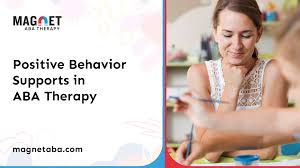Understanding the Role of Emotional Regulation in ABA Therapy

In Applied Behavior Analysis (ABA) therapy, emotional regulation plays a pivotal role in fostering coping strategies and improving social relations for autistic people spectrum disorder (ASD) and related developmental challenges. By understanding how emotional regulation manifests and its importance in therapy, practitioners can develop tailored interventions that better meet their clients’ needs.
What is Emotional Regulation?
Emotional regulation refers to how individuals influence their emotions and how they experience and express them. This involves cognitive and behavioral strategies that help manage emotional responses to various stimuli. Effective emotional regulation leads to better emotional and social functioning, while difficulties in this area can result in behavioral issues, anxiety, and challenges in relationships.
The Importance of Emotional Regulation in ABA Therapy
In ABA therapy for toddlers, the primary focus is to promote positive behaviors and reduce negative ones through reinforcement techniques. However, without adequate emotional regulation, individuals may struggle with maladaptive behaviors, making it difficult for them to engage in productive therapeutic activities.
- Behavioral Challenges: Individuals who struggle with emotional regulation may exhibit heightened levels of frustration or distress, which can lead to outbursts or withdrawal. Understanding the emotional triggers behind these behaviors allows therapists to approach interventions from a more empathetic standpoint.
- Social Interactions: Emotional regulation directly impacts social skills. Individuals with ASD may find reading social cues challenging or responding appropriately to peer interactions. By teaching emotional regulation, therapists can equip clients with the tools to navigate social situations more effectively.
- Coping Strategies: ABA therapy aims to provide individuals with effective coping strategies for overwhelming emotional experiences. These can include mindfulness techniques, deep breathing exercises, and other strategies that promote self-soothing and resilience.
Strategies for Teaching Emotional Regulation in ABA Therapy
Incorporating emotional regulation into ABA therapy requires using specific strategies that align with the individual’s needs. Here are several techniques that therapists can utilize:
- Identifying Emotions: Teaching clients to recognize and label their emotions is the first step in promoting emotional regulation. This could involve visual aids like emotion cards to help individuals articulate their feelings.
- Modeling Appropriate Responses: Therapists can demonstrate appropriate emotional responses in various situations, allowing clients to observe and imitate these behaviors. Role-play scenarios can provide valuable practice in a safe environment.
- Utilizing Reinforcement: When clients successfully identify and manage their emotions, positive reinforcement can help solidify these behaviors. This might include verbal praise, tokens, or other rewards encouraging continued progress.
- Creating a Calming Space: Establishing a designated calming area where individuals can retreat when feeling overwhelmed can be highly beneficial. This space should include calming materials, such as sensory toys or soft furnishings, to help facilitate self-regulation.
- Incorporating Mindfulness Practices: Mindfulness exercises, such as guided imagery or meditation, can help individuals develop greater awareness of their emotional states. Regular practice can improve emotional regulation over time.
Measuring Progress in Emotional Regulation
To effectively address emotional regulation within the context of ABA therapy, it is essential to implement methods for measuring progress. This could include:
- Behavioral Observations: Tracking instances of emotional outbursts or successful emotional management can provide insight into how well the individual regulates their emotions.
- Self-Reports: For older clients, self-report questionnaires on emotional experiences can help gauge their ability to manage their feelings over time.
- Parent and Teacher Feedback: Gathering information from parents and educators can offer a broader perspective on applying emotional regulation techniques across different environments.
Challenges in Addressing Emotional Regulation
While promoting emotional regulation is crucial, there are challenges that therapists may encounter:
- Individual Differences: Individuals’ emotional responses and regulatory strategies may differ significantly. Therapists must tailor their approaches to accommodate these unique needs.
- Resistance to Change: Clients may not initially see the value in learning emotional regulation strategies, which can lead to resistance. Patience and consistent reinforcement are critical in overcoming these hurdles.
- Environmental Influences: External factors, such as familial or educational stressors, can impact an individual’s emotional well-being. Collaboration with family members and educators can create a more supportive environment for emotional growth.
The Role of Parental Involvement in Emotional Regulation
Parental involvement is pivotal in fostering emotional regulation in children, particularly those undergoing ABA therapy. Participating actively in the healing process, parents can reinforce the skills learned during sessions and create a consistent environment for practice. Strategies for effective parental involvement include:
- Education and Training: Providing parents with resources and training on emotional regulation techniques allows them to understand the strategy being used in therapy. This knowledge empowers them to support their child’s emotional development at home.
- Consistency in Reinforcement: Parents can implement positive reinforcement methods at home that mirror those used in therapy, ensuring that children receive consistent feedback and encouragement for their emotional regulation efforts.
- Open Communication: Encouraging open dialogues about emotions within the family helps children feel secure in expressing their feelings. This atmosphere of acceptance can accelerate the development of emotional awareness and regulation skills.
- Modeling Behaviors: Parents can serve as role models by demonstrating effective emotional regulation themselves. When children see their parents managing stress or frustration healthily, they are more likely to adopt similar strategies.
- Shared Activities: Engaging in activities that promote emotional expression—such as art, music, or play—can help strengthen parent-child bonds while providing additional opportunities to practice emotional regulation techniques in a fun and supportive context.
Conclusion
motional regulation is a fundamental component of successful Move Up ABA therapy. Therapists can enhance their clients’ overall quality of life and promote more meaningful interactions by equipping individuals with the tools they need to manage their emotions. This necessitates thoroughly comprehending the difficulties and strategies to foster emotional resilience, ultimately leading to more positive behavioral outcomes and improved social functioning.
As practitioners continue to explore the intricate relationship between emotional regulation and behavior, they can make significant strides in tailoring interventions that effectively support individuals on the autism spectrum, fostering a path toward greater autonomy and emotional well-being.





